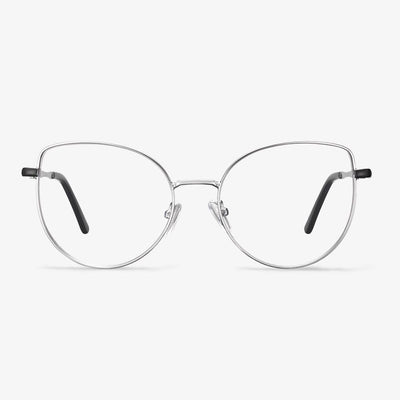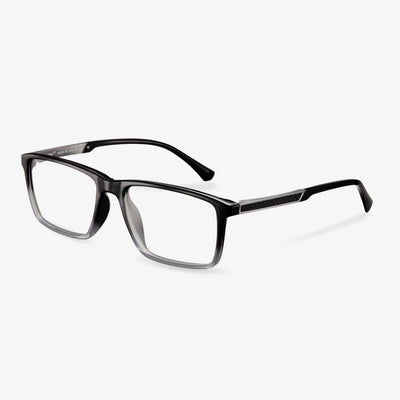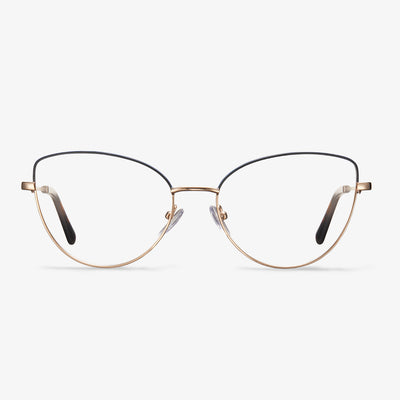Eye problems that may occur while driving.
Visual fatigue and xerophthalmia: when driving, the spirit and eyes are in a highly tense state, reducing the blink of an eye, which will easily cause eye fatigue and xerophthalmia. Flash glare -- car headlights and city light pollution -- can cause serious damage to the eyes. UV damage: UV radiation is strong when driving in the daytime, especially in the plateau and snow weather. Nocturnal myopia: nocturnal light is insufficient, so it can make the eye pupil dilate, causing nocturnal vision to drop influence driving safety.
Why do you need low bridge glasses?
The glasses always slide in front of the nose. No one wants to keep putting their glasses back in place, especially in a conversation. Your glasses will slide down your nose, in other words, they won't sit on the bridge of your nose, and the frames will hit your cheeks, which may give you a cheek rash. The glasses move when you smile or laugh. The lenses rub against your eyes/eyelashes.
A service is also a form of discount.
The eyewear industry itself is a service industry, and good service can increase sales. If they sell inferior glasses and gifts, they are destroying the brand. Optometry itself belongs to the service, when people are choosing glasses, they must include this kind of service. Consumers are willing to come to optical stores in order to get better service. Therefore, reception, recommendation, testing, and other services should be done. Such as door-to-door delivery, door-to-door product experience, introduction and recommendation, free maintenance and repair, add good value-added services, which is more likely to make consumers buy. This is also a form of promotional activity.
Choose the cost-effective glasses.
Choose your favorite glasses online. Open the shopping website, and select a store with high credibility. Choose your favorite glasses according to the style, lens, frame color, blue light blocking, radiation protection, and other factors, and then communicate with the customer service about the thickness of the lens and other specific details. If you see the frame is not suitable for yourself, you can communicate with customer service ahead of time to see whether you can buy the frame to send freight insurance. If it is not suitable, can we return it for a refund? To buy a store with a high reputation, you can look at the store's good comments and bad reviews. Talk to customer service. Sometimes there are hidden discounts.
The origin of modern eyeglasses
The origins of modern glasses can be traced back more than 1,000 years. In the Middle Ages, the reading stones used by monks were glass spheres, sometimes filled with water and placed on objects to magnify them.Glassblowers in Italy created reading stones, similar to modern hand-held magnifying glasses. The reading stone can be placed on the wearer's nose or in front of the face. Later, Spanish craftsmen built the first cobra-framed temple in the 17th century. They tie ribbons or strings to the frames and tie them around the user's ear.
In the 18th century, Edward Scarlett created the first wearable glasses, providing more comfort for eyewear wearers. These early glasses had glass lenses embedded in heavy frames made of wood, lead, or copper. Natural materials of leather, bone, and horn were later used to make the frames. In the early seventeenth century, lighter steel frames were invented. As eyewear continued to evolve and prescription accuracy improved, the trend for eyewear to become more fashionable began. In the 18th century, bifocal lenses appeared, making it possible to correct upper myopia and lower presbyopia. Later glasses were designed to be fixed by a ribbon or by applying pressure to the bridge of the nose. In the 1980s, plastic lenses were introduced, providing a more durable alternative to glass lenses. Ultimately, the glasses used today are the result of centuries of technological and intellectual advances.
Can Pinhole Glasses Improve Your Vision?
The most important question may be whether the pinhole glasses improve your eyesight and some people may have this trouble. Some people say pinhole glasses can improve the vision of nearsightedness or astigmatism. But there is no evidence to prove that.
Although pinhole glasses can improve vision to some extent, they are not practical for everyday use. Pinhole glasses are designed to block part of your direct vision and restrict peripheral vision. They would cut the amount of light entering your eyes so as to reduce the visual quality of an image. Hence, it would be not recommended to wear pinhole glasses in daily life.
What difference do mono-focal glasses and multi-focal glasses have?
A mono-focal lens is a lens with one focal point. Usually, the myopic far-sighted presbyopia that we see belongs to mono-focal glasses. There is only one diopter on one lens, and this is the single focal point. Multi-focal glasses are lenses that have multiple focal points, that is, multiple diopters. Both mono-focal glasses and multi-focal glasses are visual correction tools, but mono-focal glasses can meet basic vision needs, like fatigue relief, control of depth of diopters, and focus on different distances such as the need to see far and near.But because there are many different diopters on a multi-focal glasses lens, so the elderly can not only see far after wearing. When they see close distance, they do not need to take off glasses or wear reading glasses. Wearing multi-focal glasses is not easy to fatigue.


































